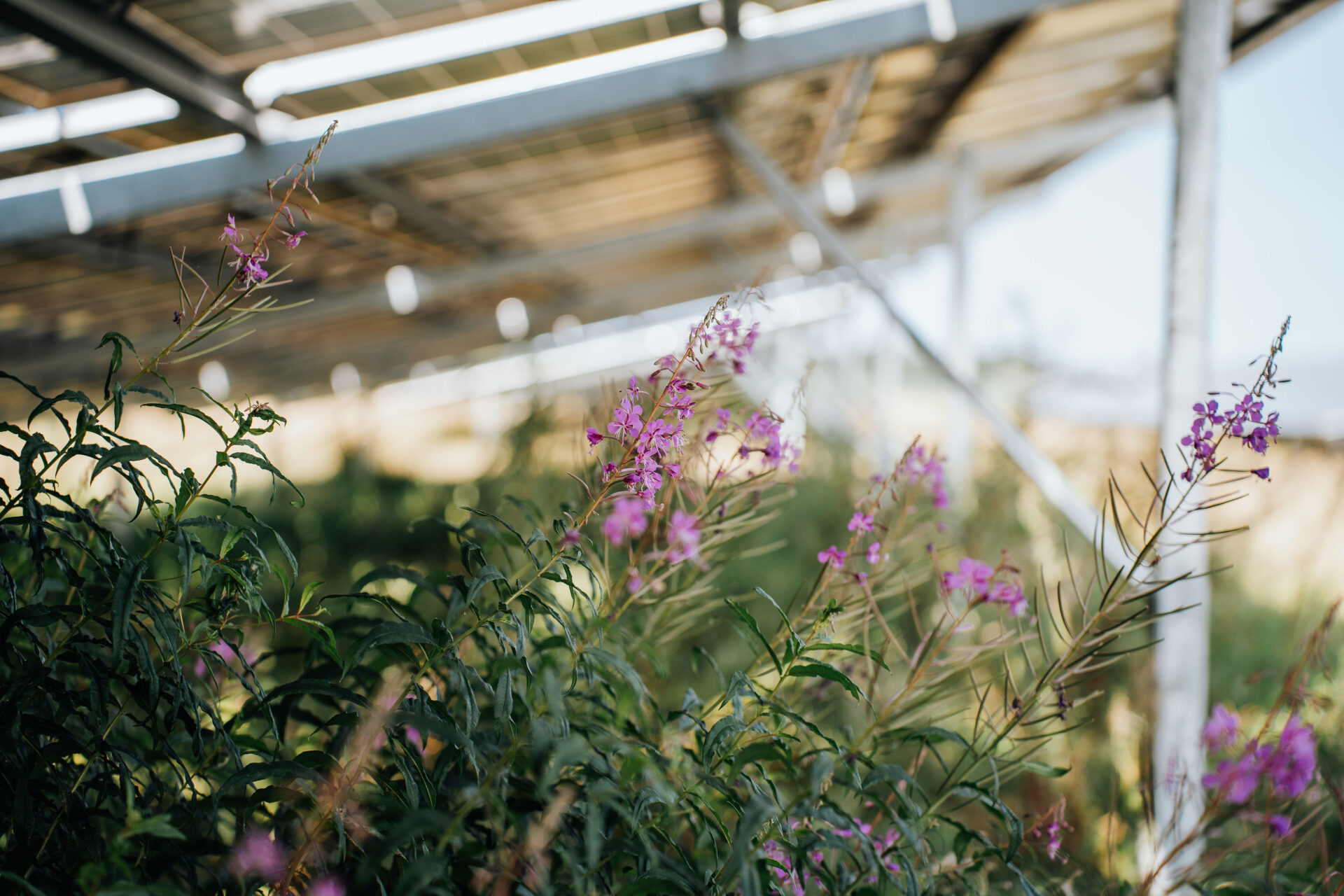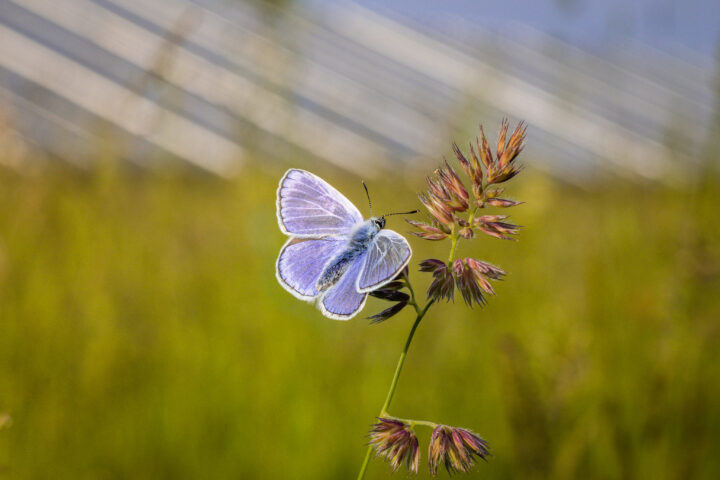Valuable retreats for rare species
Solar parks not only contribute to climate protection, but also to biodiversity. This is shown by many studies and species counts between and under the rows of modules. Whether skylark, sand lizard or purple fritillary - solar parks have become valuable refuges for many endangered species. Unlike in cleared agricultural landscapes, a variety of flowering plants and specialised insects can be found there. Numerous rare birds, bats and reptiles also benefit from this.
Particularly in solar parks, which are Biodiversity PV planned and operated, the Development and preservation of a species-rich flora and fauna an integral part of the concept.
Solar parks enhance the ecological value of land
Ground-mounted PV systems offer flora and fauna precisely those areas of retreat that have become rare in our cultivated landscape: Open, extensively farmed areas that are neither fertilised nor sprayed. Almost half of Germany's land is used intensively for agriculture. Monocultures, over-fertilisation, the destruction of biotopes and a lack of fallow land are considered to be the main causes of the dramatic decline in species. Solar parks can counteract this to a certain extent: The Extensive maintenance by mowing or grazing and the avoidance of fertilisers and pesticides promote biodiversity.
"As the management does not change during the lifetime of the facilities, stable populations of animals and plants can develop and, above all, be maintained through the type of management."
Dr Tim Peschel, biologist
Biodiversity can be increased in this way, particularly on areas that were previously conventionally farmed - a solar park is significantly richer in species than a maize field, for example. And while only dandelions can often be found on intensively utilised grassland, a wide variety of flora can thrive under and between the rows of modules. Even on Conversion areas and on pastureland that is no longer utilised, photovoltaic energy generation helps to preserve ecologically valuable open landscapes.
Studies show diverse flora and fauna in the solar park
A comprehensive study on the effects of solar parks has shown that species richness generally increases significantly there. For the study Solar parks - benefits for biodiversity planning documents for a total of 75 solar parks were analysed. The flora and fauna of three solar parks in Brandenburg were also recorded. Around 60 per cent of all 58 grasshopper species found in the state were identified. These included specialised and highly endangered species such as the Italian grasshopper and the blue-winged grasshopper. The 44 butterflies recorded also included extremely rare species such as the purple fritillary and the short-tailed blue. The results confirm studies in England, where higher numbers of butterfly and bumblebee species were recorded in eleven solar parks than on surrounding agricultural land.
Species census in existing solar parks
The "solar park habitat" was the main topic of the GEO Day of Nature 2021. Qualified biologists spent two days recording the flora and fauna in a total of seven existing solar parks. The Results of the species analysis show that the large areas of solar parks can represent an important source habitat for endangered animal and plant species. The research was presented in GEO magazine (November 2021 issue), in a Background paper and published by the bne as fact sheets for each solar park analysed. All of the parks analysed are existing sites, each with a different species focus, where species-rich habitats have developed for various reasons. The studies show that species-rich habitats have developed due to the low level of disturbance in the solar parks, the absence of pesticides/fertilisers and extensive cultivation. In addition to many increasingly rare species, even the endangered wheatear (Red List category 1) has been recorded in a solar park in Brandenburg, for example.
The Investigations of flora and fauna in species-rich existing solar parks helps to identify framework conditions and effective measures to for new solar park plans designed as biodiversity PV from the outset support the development of species-rich habitats.












Good planning increases biodiversity
With the voluntary commitment "Good planning of ground-mounted PV systems" of the German Association of the New Energy Economy (bne), the design and operation of solar parks are based, among other things, on the Increasing biodiversity. How this can be achieved in individual cases is discussed during the planning process and together with conservationists and those who maintain the areas in the solar park. In this way, a good concept can be developed that suits the conditions at a particular site. During the Care of the surfaces no poisons or fertilisers may be used. Insect and bird-friendly varieties are planted. Native seeds are used. The colonisation of insects and birds is also supported by nesting aids. Depending on the conservation objective, sun exposure is achieved that promotes the most biodiverse habitats possible. A wide spacing between the rows of modules benefits sand lizards and certain species of grasshopper, for example. On the other hand, structural diversity through sections with narrower row spacing can favour habitats for amphibians.
Gentle mowing or Grazing by sheep preserves habitats such as dry grassland. Other Agricultural utilisation such as poultry farming, the production of organic hay, beekeeping or the cultivation of crops by market gardeners are possible in solar parks. Such multiple uses enable extensive farming in combination with nature conservation and climate protection. Well-planned solar parks thus become a win-win situation for everyone.






